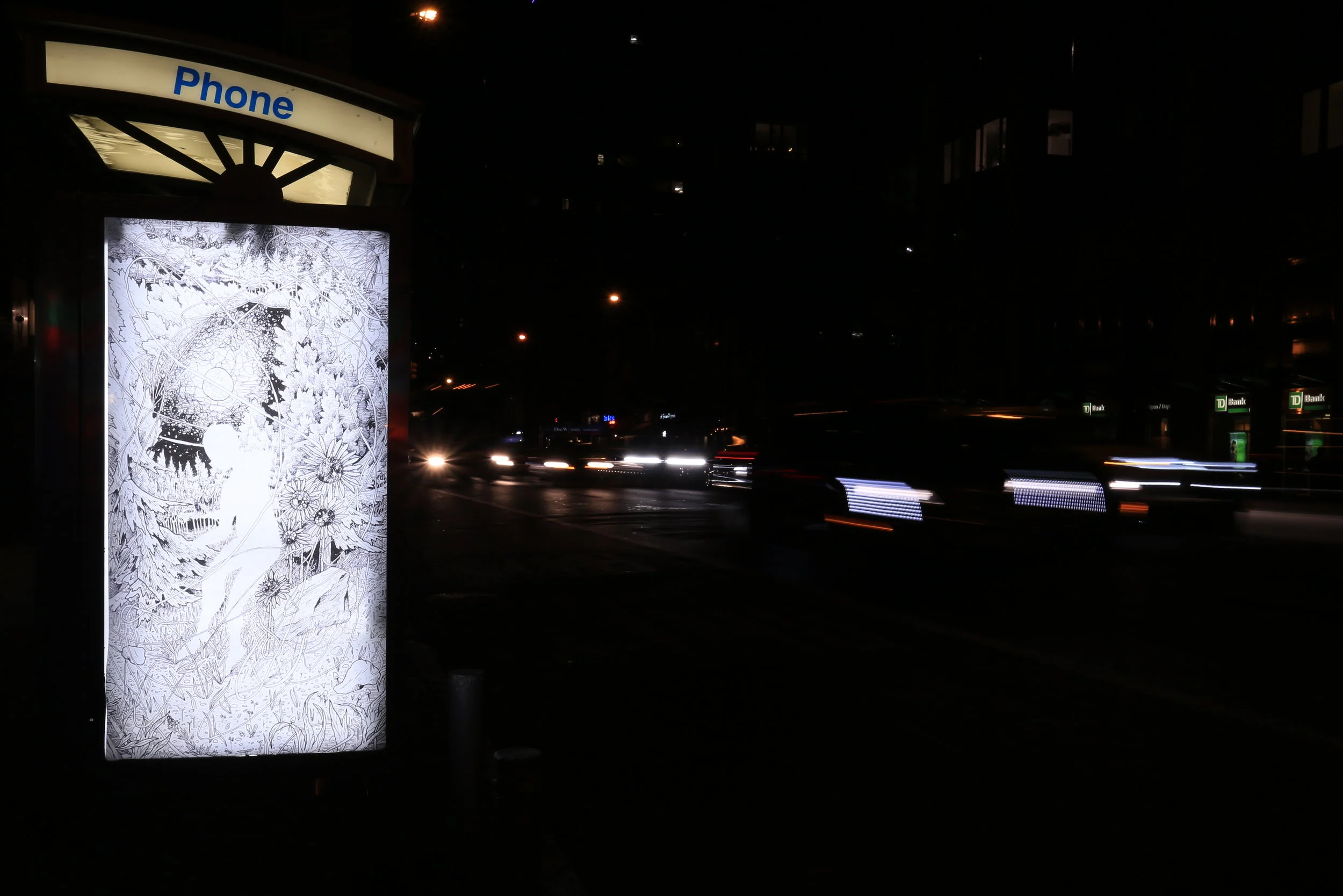Artwork by Tod Seelie. Photo by Luna Park.
In the past, RJ has said that Tod Seelie is "Jack Kerouac with a camera." He has a way of putting himself in the most amazing situations, whether that's embedding himself with a crew of artists-turned-shipbuilders, heading to Cuba to meet the man building the world's tallest bike, or finding scenes of industrial decay in the California desert. Tod lived in NYC from the 1990's until 2016, and is such an underground icon that Gothamist ran a piece about his move to LA. With Tod back in NYC for a minute, we figured it was time to celebrate by putting up his work.
Here's what Tod had to say about why he signed on to Art in Ad Places:
I love seeing art in ad places. It catches your eye much more than standard advertising because it is not more of the same familiar bombardment that especially city-dwellers are so inundated with. It doesn't have an ulterior motive, it just exists to be appreciated and perhaps inspire thought. It is often more mysterious, interesting and engaging. It is a gift to the public, rather than an ask (for your attention and money).
Artwork by Tod Seelie. Photo by Luna Park.
Also, we got some exciting press this week in Gothamist. You can read that article here. In it, we talk about the feminist inspirations behind Art in Ad Places, and the bad deal that the public has struck with the companies who sell ad space on pay phones.










